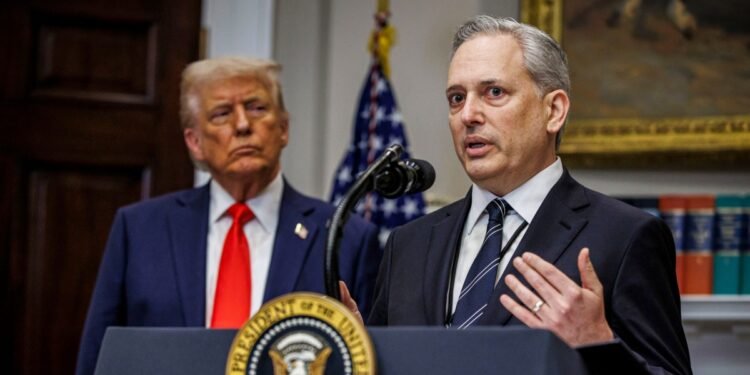Landmark Crypto Summit Hosted at White House Signals Industry Engagement
In a groundbreaking development for the cryptocurrency space, the White House held its first-ever “crypto summit” aimed at gathering top executives from various digital asset companies. The summit was intended to address a shift from the stringent regulatory stance of the previous administration towards a more accommodating approach under the current administration. Despite these intentions, the event fell short of expectations for many in the crypto community, leading to a downturn in digital asset prices, including that of Bitcoin.
Professional Insights on Regulatory Changes
At the summit, David Sacks, known as Trump’s “crypto czar” and a prominent venture capitalist, revealed that the President had authorized the creation of a “strategic bitcoin reserve.” While this move garnered support from the crypto community, the specifics indicated that the reserve would only comprise bitcoins seized by federal law enforcement agencies, rather than new cryptocurrency acquisitions. Prior to the summit, White House officials likened the reserve to a “digital Fort Knox,” emphasizing the responsible management of the government’s digital assets.
Jeff Park, a Bitwise executive, expressed dissatisfaction, stating, “Our request fell short… Having only bitcoin in the strategic reserve, excluding other altcoins, is not satisfactory.” Park’s sentiments echoed a general feeling within the industry that more definitive actions were anticipated from the administration.
Market Context and Immediate Responses
Post-summit, Bitcoin’s value experienced a modest 3% decline, heading towards concluding the week with a 7% dip, trading around $87,000. This downturn was partially attributed to a recalibration of expectations following the strategic reserve announcement, which lacked a clear timeline or commitment to acquiring additional cryptocurrencies. Despite these fluctuations, Bitcoin’s current price still marks a significant 25% increment compared to its value before Trump’s previous election victory in November.
The cryptocurrency sector has increasingly played a substantial role in political funding, contributing more than $245 million during the recent election cycle, with almost half of all corporate donations originating from this industry, as per Federal Election Commission data.
Potential Ramifications for the Crypto Industry
The introduction of a limited strategic bitcoin reserve signifies a notable shift in the U.S. government’s stance toward cryptocurrencies. Trump’s statement at the summit about ending the federal bureaucracy’s “war on crypto” indicates a desire to cultivate a more favorable regulatory landscape, fostering innovation and investment in the field. While some industry leaders anticipate broader involvement from the administration, others see the current measures as inadequate.
Additionally, discussions regarding tax obligations in the crypto sector were tackled, with officials dispelling notions of tax-free gains from crypto holdings. This clarification underscores the complexities that investors and firms encounter as they navigate the regulatory framework.
Wrap-Up
The White House’s inaugural crypto summit serves as a significant milestone in the interaction between the U.S. government and the cryptocurrency industry. While the proposed initiatives signify progress towards greater acceptance and regulatory transparency, the varied responses from industry players imply that there is still much to accomplish. As the crypto landscape evolves, the effectiveness of these actions will hinge on the government’s willingness to enhance engagement and actively back the sector. The summit has initiated crucial dialogues, but the road ahead remains uncertain and will demand continual conversation between industry figures and policymakers.








